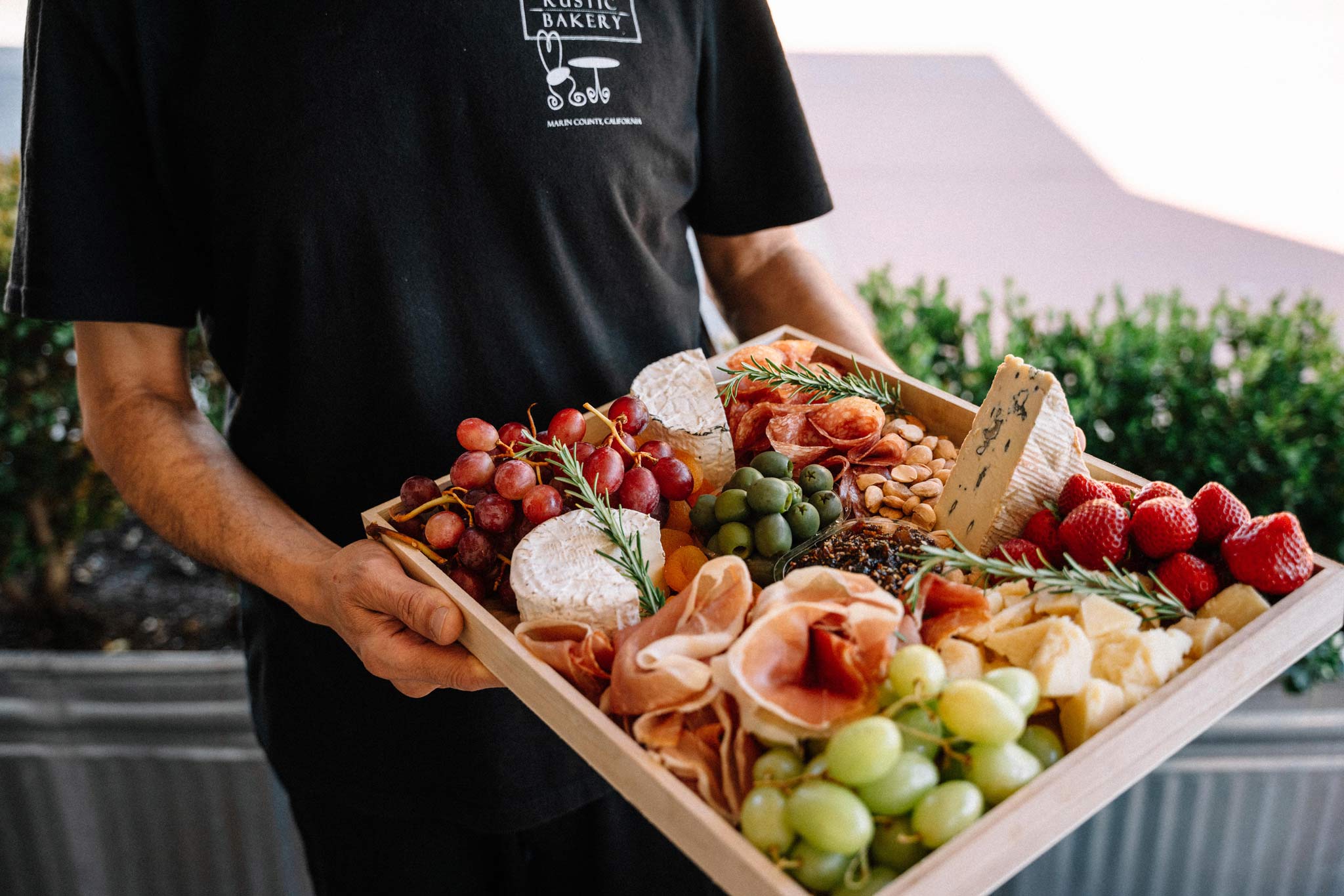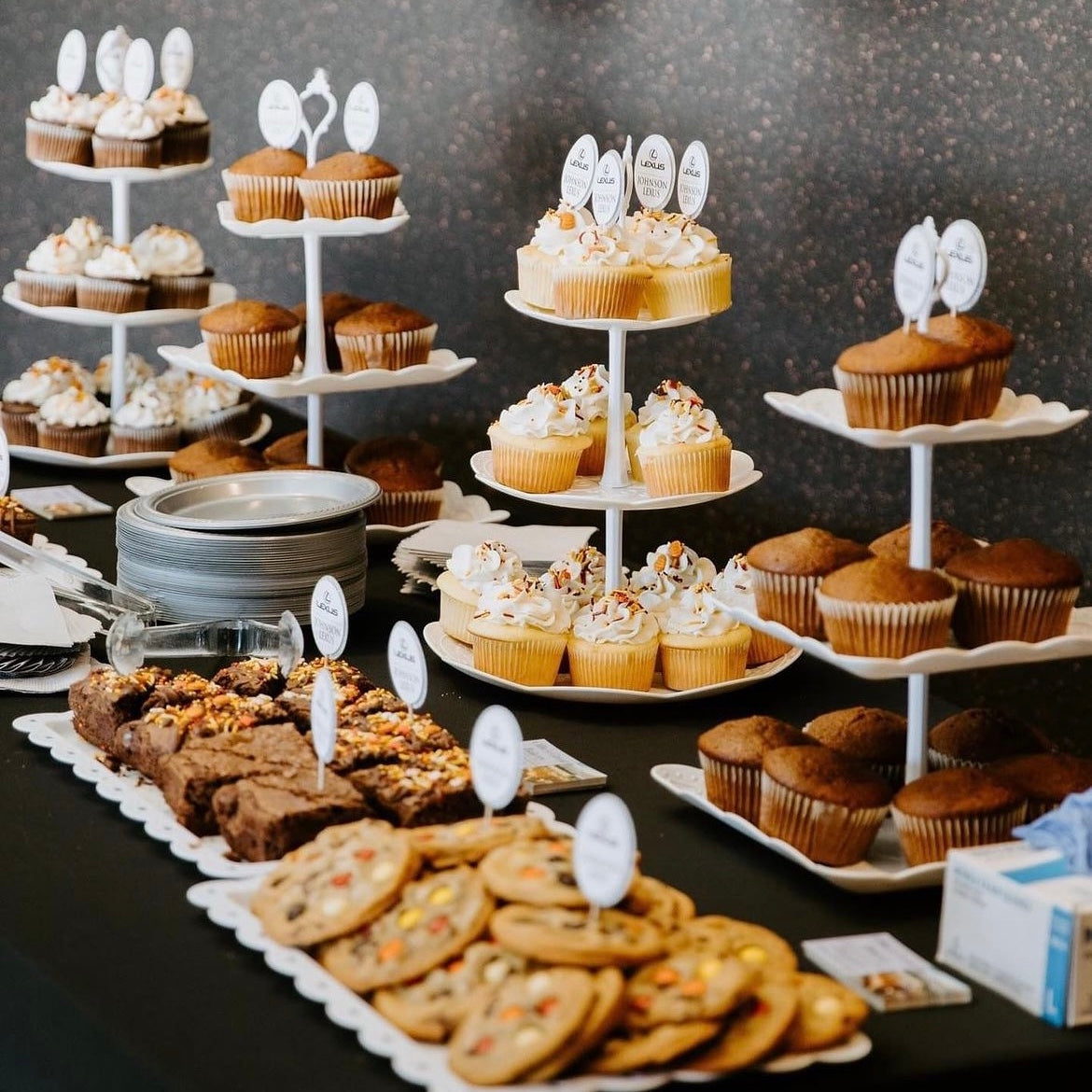Comprehending the Art of Pastry Shop Products: From Freshly Baked Breads to Alluring Pastries and Finger Foods
From the science behind the perfect loaf of bread, where fermentation and gluten advancement play essential functions, to the finesse required for creating layered breads, each facet exposes a compelling narrative of craftsmanship. The flexibility of finger foods highlights how taste and texture can be artfully combined to engage diverse preference choices.
The Scientific Research of Bread Making
At the heart of every loaf of bread lies a remarkable interaction of chemistry and biology. The procedure of bread making begins with the mix of flour, water, salt, and yeast-- each active ingredient playing a vital role in the final product.
Yeast, a living microorganism, ferments the sugars existing in the flour, creating co2 and alcohol in the procedure. The carbon dioxide gas creates bubbles in the dough, causing it to increase and establish a light structure. The temperature and moisture throughout fermentation substantially influence yeast task and, as a result, the bread's taste and appearance.

Learning Pastry Methods
Exactly how can one achieve the fragile balance of appearance and flavor that specifies outstanding pastry? Mastering bread techniques needs a deep understanding of ingredients, techniques, and the science behind them. Essential to this craft is the selection of high-quality ingredients-- flour, butter, sugar, and eggs-- each playing a vital role in the last product's flavor and appearance.
The technique of lamination, which includes folding layers of dough and butter, develops the desired flakiness in breads like croissants and puff bread. Precision in temperature is essential, as butter should stay cool to guarantee ideal layers. Similarly, appropriate blending methods, such as the creaming method for cakes, make certain even consolidation of air and fat, causing a light and ventilated crumb.
Moreover, maintaining the best moisture degrees during cooking can significantly impact the result, making certain that breads rise correctly and accomplish that golden-brown surface. Lastly, the art of pastry also demands persistence and technique; each effort boosts one's ability and understanding of the intricate equilibrium required to produce tempting pastries that delight the detects. Proficiency in these techniques eventually distinguishes a knowledgeable pastry chef from an amateur.
Sorts Of Finger Foods
The world of cooking thrills prolongs past breads to encompass a vast array of finger foods, which are celebrated for their benefit and convenience. These bite-sized treats are best for social gatherings, offering a range of flavors and textures that satisfy varied tastes buds.

On the sweeter side, bite-sized cupcakes and miniature tarts offer a wonderful surface to any kind of dish, appealing to those with a wonderful tooth. Additionally, cheese and charcuterie boards act as a sophisticated option, permitting visitors to customize their bites with a selection of meats, cheeses, fruits, and nuts.
Taste Profiles in Cooking
Baking is a complex dance of flavor profiles that combines sweet, savory, and umami notes to create an unified experience for the palate. Understanding these accounts is essential for bakers looking for to boost their developments.
Sweet taste typically works as the foundation in baked goods, with sugars, fruits, and all-natural sugar improving taste depth. Ingredients such as delicious chocolate and sugar introduce complex pleasant notes that can either control or match other tastes. On the other hand, mouthwatering aspects, typically discovered in breads and breads, supply balance and comparison. Components like seasonings, cheeses, and herbs can change a basic dough into a complex flavor experience.
Umami, regularly neglected in cooking, plays a significant duty in improving flavors. Components such as aged cheeses, fermented products, or even certain nuts contribute to a full-flavored deepness that enhances general preference.
Additionally, the interaction of level of acidity from ingredients like buttermilk or citrus passion can lighten up flavors, using a refreshing counterpoint to sweetness. By thoughtfully incorporating these taste accounts, bakers can craft products that resonate with varied tastes, creating an extraordinary cooking experience. Ultimately, mastering flavor accounts is vital to innovation on the planet of cooking.
Essential Baking Equipments and Active Ingredients
Recognizing flavor profiles in baking sets the stage for choosing the right tools and active ingredients that facilitate the creation of extraordinary baked products. The structure of effective cooking hinge on having crucial devices available. Trick things consist of mixing bowls, determining cups, and spoons for precision, in addition to a durable stand mixer or hand mixer for uncomplicated mixing. A trusted set of baking pans-- such as sheet pans, loaf frying pans, and cake pans-- is essential for achieving wanted structures and shapes.
Flour offers as the backbone of the majority of recipes; picking the ideal kind-- be my latest blog post it bread, all-purpose, or pastry flour-- can drastically influence the outcome. Cooking powder and cooking soft drink read more are necessary for producing lift in cakes and breads.
In addition, including taste boosters like vanilla extract, flavors, and citrus enthusiasm can boost your developments. By guaranteeing accessibility to these essential devices and components, bakers can with confidence embark on their culinary trip, crafting a varied range of fascinating baked items.
Final Thought
Proficiency in bread production, pastry preparation, and finger food presentation discloses the detailed partnerships in between components and processes. Birthday Catering Maddington. Checking out diverse flavor accounts enhances the baking experience, while important tools and active ingredients give the structure for success.
How can one achieve the fragile equilibrium of texture and taste that specifies extraordinary pastry? Basic to this craft is the option of top quality ingredients-- flour, butter, sugar, and eggs-- each playing a critical role in the last product's taste and structure.

Understanding flavor profiles in cooking collections the phase for picking the right tools and ingredients that help with the development of phenomenal baked goods. Exploring diverse flavor profiles enriches the baking experience, while essential tools and ingredients supply the structure for success.